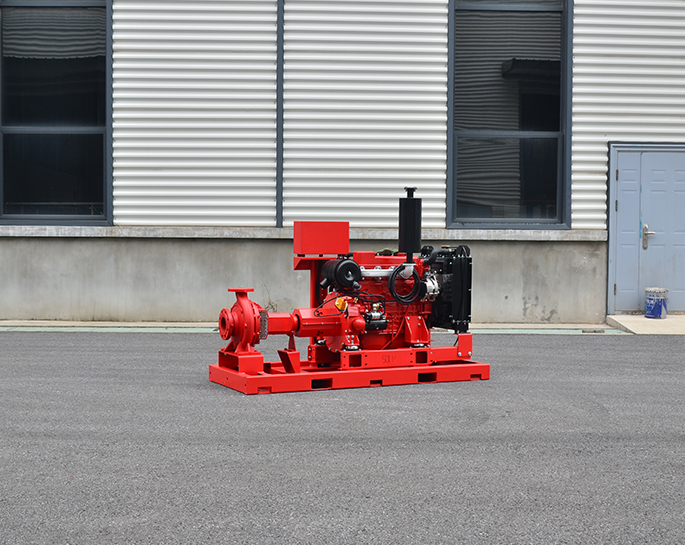How does a fire pump handle changes in building occupancy or usage?
Aug 12, 2024
Share:
Fire pumps are essential components of a building's fire protection system, and their operation is designed to be responsive to the building's fire protection needs rather than directly influenced by changes in occupancy or usage. However, changes in building occupancy or usage can indirectly affect the fire pump's operation by influencing the fire protection demands.
Here's how a fire pump typically handles these changes:
### 1. **System Design and NFPA Compliance**
- Fire pumps are designed and sized according to the building's fire protection needs based on codes like the National Fire Protection Association (NFPA) standards, particularly NFPA 20. These designs take into account the building's layout, occupancy, and fire hazards. If the occupancy or usage of a building changes significantly, the fire protection system, including the fire pump, may need to be reassessed to ensure it meets the new requirements.
### 2. **Water Demand**
- Changes in occupancy or usage can lead to different levels of water demand during a fire event. For example, a building that becomes a storage facility for flammable materials might require a higher flow rate from the fire protection system. If the fire pump was not originally sized for this increased demand, it might need to be upgraded or supplemented with additional equipment.
### 3. **System Pressure**
- The fire pump is designed to maintain adequate system pressure to ensure that water reaches all areas of the building's fire protection system. If changes in building occupancy or usage lead to modifications in the sprinkler system (e.g., more sprinklers, different sprinkler types), this could alter the system's hydraulic demands. In such cases, the fire pump may need recalibration or replacement to ensure it maintains the necessary pressure.
### 4. **System Modifications**
- When a building undergoes significant changes in occupancy or usage, the fire protection system might need to be modified, including changes to the sprinkler system or hydrants. These modifications can affect the operation of the fire pump. For instance, if a building expands or adds more floors, the fire pump might need to be upgraded to ensure it can deliver water to the new areas.
### 5. **Maintenance and Testing**
- Regular maintenance and testing of the fire pump are crucial, especially when changes occur in building occupancy or usage. Periodic testing helps ensure that the pump operates as intended under various conditions. Any change in building use should prompt a review of the fire pump's performance to confirm that it still meets the building's fire protection requirements.
### 6. **Safety Margin**
- Fire pumps are often designed with a safety margin to accommodate minor changes in building usage. However, significant changes, such as converting an office building to a high-hazard industrial facility, would likely require a comprehensive review of the fire protection system, including the fire pump.
In summary, while a fire pump doesn't directly adjust to changes in building occupancy or usage, these changes can necessitate a review and potential upgrade of the fire pump and the overall fire protection system to ensure continued compliance with safety standards and adequate fire protection.

Here's how a fire pump typically handles these changes:
### 1. **System Design and NFPA Compliance**
- Fire pumps are designed and sized according to the building's fire protection needs based on codes like the National Fire Protection Association (NFPA) standards, particularly NFPA 20. These designs take into account the building's layout, occupancy, and fire hazards. If the occupancy or usage of a building changes significantly, the fire protection system, including the fire pump, may need to be reassessed to ensure it meets the new requirements.
### 2. **Water Demand**
- Changes in occupancy or usage can lead to different levels of water demand during a fire event. For example, a building that becomes a storage facility for flammable materials might require a higher flow rate from the fire protection system. If the fire pump was not originally sized for this increased demand, it might need to be upgraded or supplemented with additional equipment.
### 3. **System Pressure**
- The fire pump is designed to maintain adequate system pressure to ensure that water reaches all areas of the building's fire protection system. If changes in building occupancy or usage lead to modifications in the sprinkler system (e.g., more sprinklers, different sprinkler types), this could alter the system's hydraulic demands. In such cases, the fire pump may need recalibration or replacement to ensure it maintains the necessary pressure.
### 4. **System Modifications**
- When a building undergoes significant changes in occupancy or usage, the fire protection system might need to be modified, including changes to the sprinkler system or hydrants. These modifications can affect the operation of the fire pump. For instance, if a building expands or adds more floors, the fire pump might need to be upgraded to ensure it can deliver water to the new areas.
### 5. **Maintenance and Testing**
- Regular maintenance and testing of the fire pump are crucial, especially when changes occur in building occupancy or usage. Periodic testing helps ensure that the pump operates as intended under various conditions. Any change in building use should prompt a review of the fire pump's performance to confirm that it still meets the building's fire protection requirements.
### 6. **Safety Margin**
- Fire pumps are often designed with a safety margin to accommodate minor changes in building usage. However, significant changes, such as converting an office building to a high-hazard industrial facility, would likely require a comprehensive review of the fire protection system, including the fire pump.
In summary, while a fire pump doesn't directly adjust to changes in building occupancy or usage, these changes can necessitate a review and potential upgrade of the fire pump and the overall fire protection system to ensure continued compliance with safety standards and adequate fire protection.


.png)
.png)

.png)


